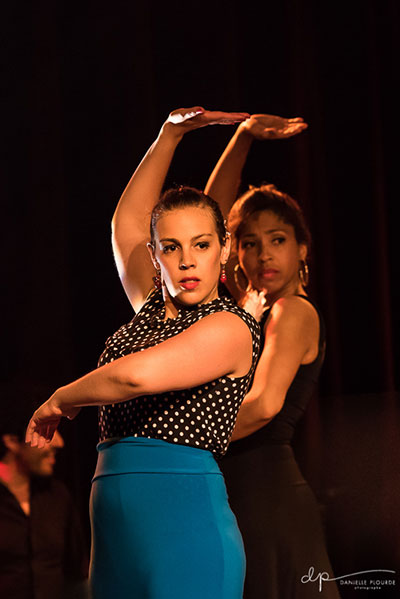L’ACADÉMIE BALLET FLAMENCO LINA MOROS

Mission
Ms Moros is often invited to give private classes and workshops as well as coaching to artists in other fields.
The Académie Ballet Flamenco Lina Moros was founded in Montreal, 1990. Our mission is to offer well-structured classes to students of all levels: to those discovering flamenco for the first time to professionals-in-training. The academy’s mandate is to demystify flamenco and instil confidence in each student’s ability to appreciate and learn this art form. Lina Moros has built an academy where the atmosphere is supportive, stimulating and dynamic. Students are regularly encouraged to make the passion, energy and fun of flamenco part of their daily lives by listening to music, attending performances and taking time to practice outside of class.
Flamenco will not resolve wars nor prevent the end of the world, but it will keep your head held high.
— Israel Galván, Spanish choreographer and flamenco
Pedagogical Approach
Director Lina Moros has performed, taught and studied flamenco her entire adult life. Her training and teaching experience in other disciplines such as literature, languages, music and fine arts have enabled her to synthesize and create a comprehensive pedagogy.
The goal of each class is to help students acquire the essential characteristics and vocabulary of flamenco dance including braceo (arm work), posture, precise taconeo (footwork), and to encourage self-expression. Various teaching techniques are used to accommodate different learning styles.
Acquiring the skill of doing palmas (rhythmic hand-clapping) improves compás (rhythm) and coordination. By giving palmas for each other, students learn the art of accompanying and communicating with others – an important part of the flamenco adventure. A few minutes of each class are allocated to the students to decipher steps without teacher supervision, and thereby learn to construct and deconstruct combinations independently.
Once students have mastered the basics and more, they are introduced to the use of accessories common to flamenco and Spanish stylized dance. These include castanets, the mantón de Manila (large embroidered shawl), the abañico (fan), the bata de cola (dress with a long train) and the bastón (cane). Learning to dance with these accessories is a delightful challenge that embellishes the student’s personal style and range of expression.
When student dancers and guitarists work together they deepen their understanding of compás. We are fortunate to have guitarists from the Académie de la Guitare Flamenca, founded by Michel Beauchamp and Roger Lapierre, as well as other musicians accompany classes on an occasional and regular basis. Together, dancers and musicians can discover and develop the bond between music and dance. Lina Moros also guides students in the importance of cante flamenco (flamenco song) and its influence on the structure of a baile (dance).
